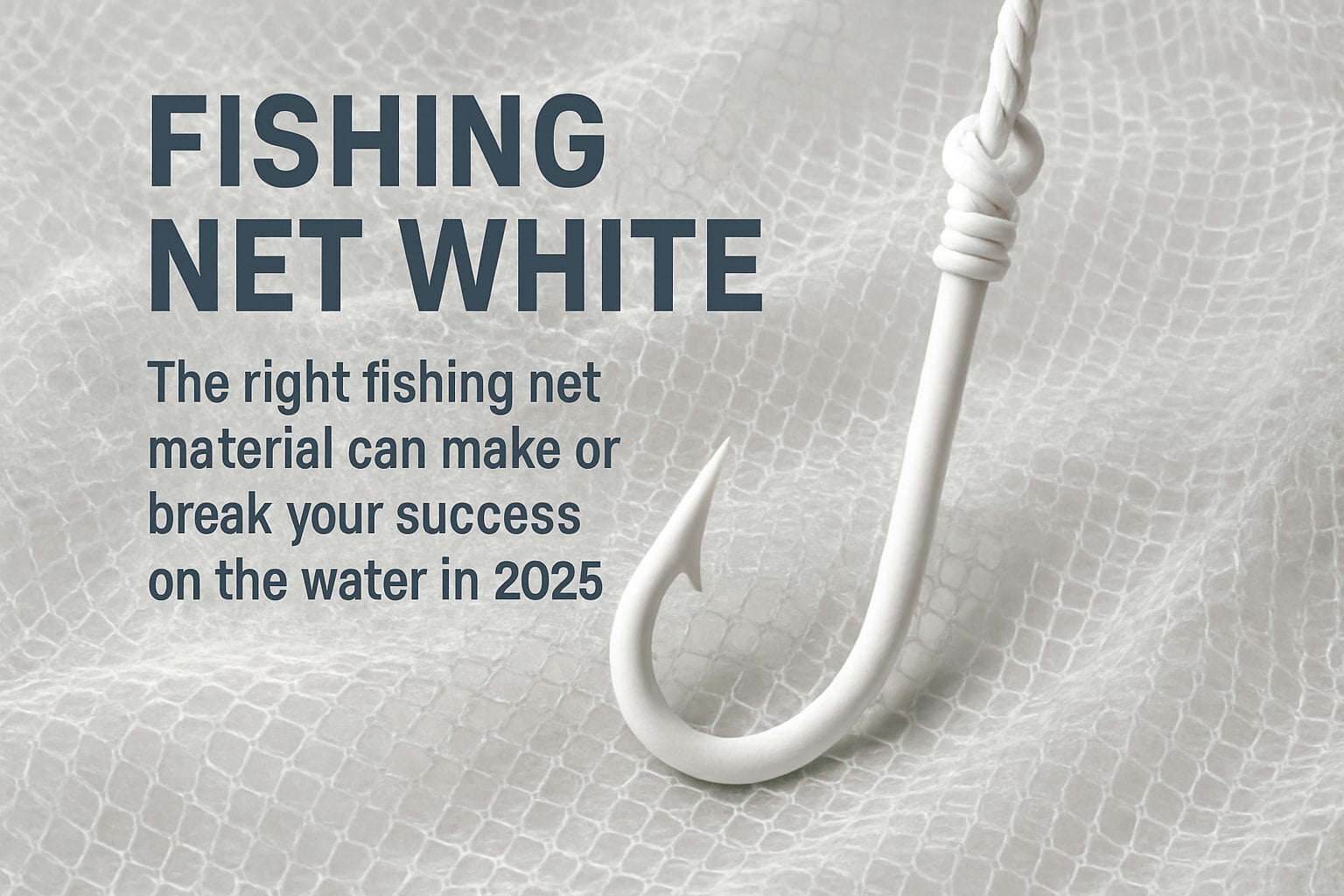Choosing the right fishing net white material can mean the difference between a successful catch and a disappointing day on the water in 2025.
This guide will show you how to select the best material for your fishing net white, ensuring you balance durability, visibility, and top-notch performance.
Discover the latest material options, compare essential features, and see how new net technologies can impact your results. With expert tips and a step-by-step approach, you will be equipped to maximize your catch and care for the environment.
Why Net Material Matters for Fishing Success
Choosing the right fishing net white material is key to achieving consistent results on the water. The material directly affects your catch rate, how long your equipment lasts, and how easy your net is to use every day. Whether you fish commercially or for recreation, the right choice can mean the difference between a bountiful haul and a missed opportunity.
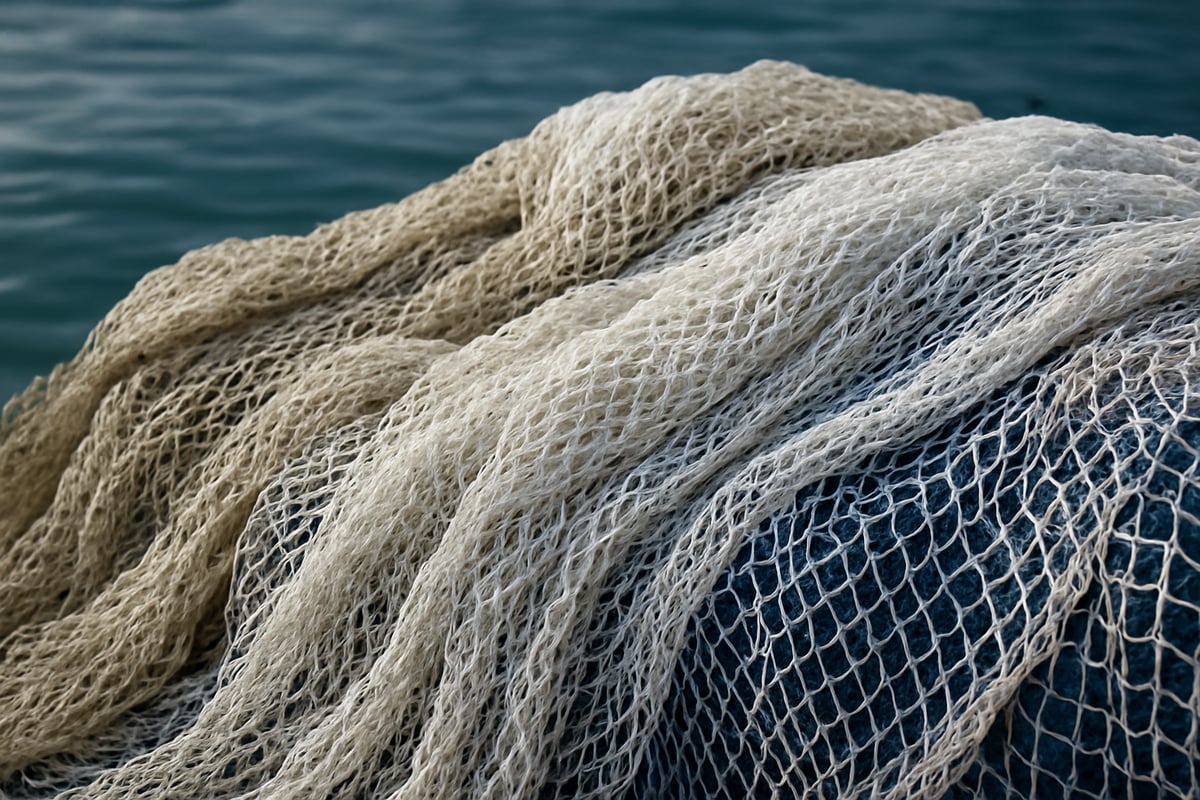
The material of a fishing net white determines more than just its appearance. It influences how fish interact with the net, how easy it is to spot underwater, and how much effort is needed to deploy and retrieve it. For instance, synthetic materials like nylon or polyethylene are popular for their strength and resistance to abrasion, making them reliable choices for demanding environments.
The color of your fishing net white also plays a crucial role. White nets can be highly visible, which is sometimes an advantage if you want to direct or herd fish, but can be a disadvantage for species that are easily spooked. Research and experience show that visibility impacts catch rates, especially in clear water. Fish behavior varies by species, so understanding how your target reacts to a fishing net white is essential.
Handling and storage are other factors influenced by net material. Lightweight synthetic nets are often easier to manage and store, while traditional materials like cotton may require more care to prevent rot or mildew. The choice of fishing net white, whether made from natural or synthetic fibers, affects how quickly you can set up or pack away your gear, impacting overall efficiency.
Different fishing scenarios demand different material qualities. In commercial fisheries, durability and low maintenance are priorities, while recreational anglers might prefer a fishing net white that is lightweight and easy to carry. Freshwater environments may benefit from softer materials that are gentle on fish, whereas saltwater fishing requires resistance to corrosion and UV exposure. The impact of net material choice in each scenario can be significant, affecting both catch rates and equipment lifespan.
A comparative look at net material performance highlights these differences:
| Material | Average Catch Efficiency | Maintenance Needs | Durability |
|---|---|---|---|
| Nylon | High | Low | Excellent |
| Cotton | Moderate | High | Fair |
| Polyethylene | High | Low | Very Good |
Environmental factors are now a major consideration. Regulations in many regions encourage or require the use of biodegradable materials to reduce ghost fishing and protect marine life. Choosing an eco-friendly fishing net white not only helps you comply with local laws but also supports sustainable fishing practices. For a comprehensive look at material and color options, see the White fishing nets overview.
Finally, matching your fishing net white material to the species you target and the local water conditions is crucial. Some fish are more likely to avoid highly visible nets, while others may not be as sensitive. The right material choice balances stealth, strength, and environmental responsibility, ensuring you get the best results without compromising on sustainability.
Overview of White Fishing Net Materials in 2025
Selecting the right fishing net white material is crucial for achieving results in both commercial and recreational fisheries. In 2025, the market offers a range of materials, each with unique properties, advantages, and challenges. Understanding these differences is key to making an informed choice that fits your needs and complies with current standards.
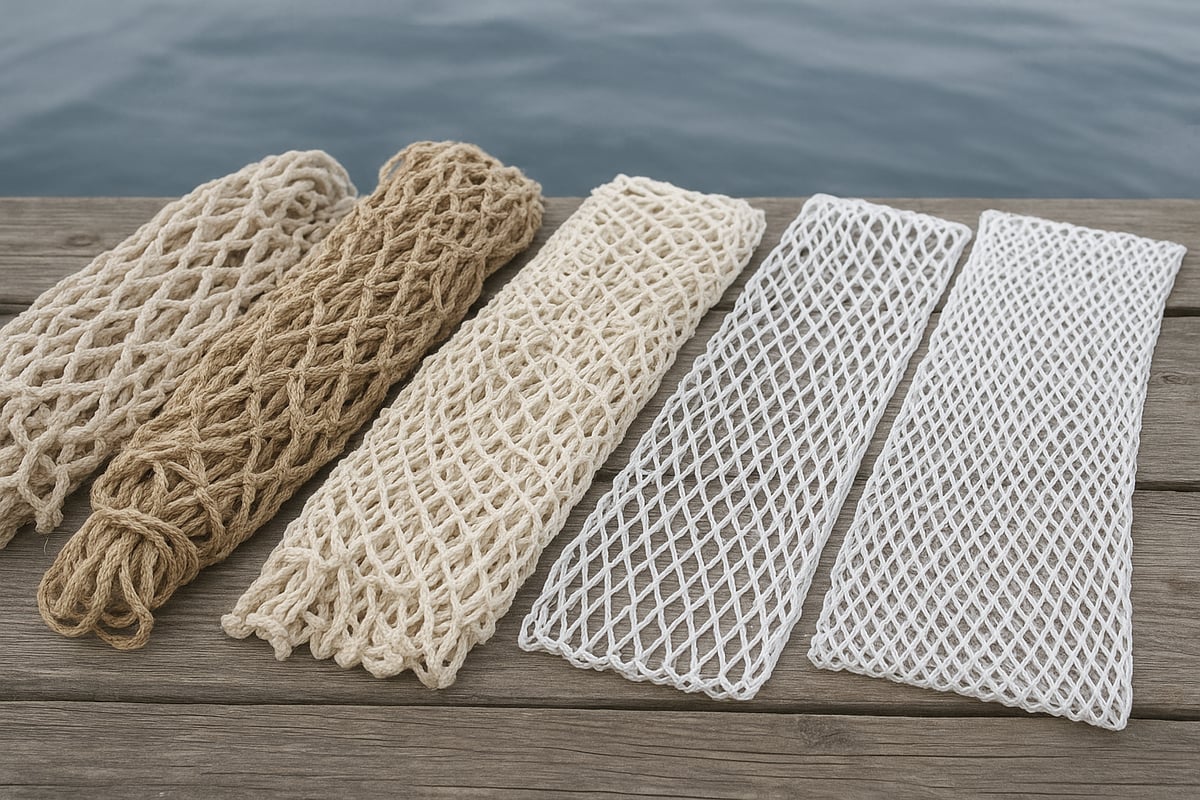
Natural Fibers: Cotton, Hemp, Linen
Traditional fishing net white options often feature natural fibers like cotton, hemp, and linen. These materials are valued for their biodegradability and minimal environmental impact. Cotton nets are soft and flexible, making them easy to handle. Hemp and linen add strength and resist stretching, but may become stiff over time.
Natural fiber fishing net white materials require regular maintenance. They are prone to rot, mildew, and wear when exposed to prolonged moisture, especially in saltwater settings. Routine drying and cleaning are essential to extend their lifespan.
Artisanal fisheries and eco-sensitive operations sometimes favor these nets, especially in regions with strict sustainability standards. However, natural fibers are less common in large-scale commercial applications due to their limited durability. In 2025, a small but dedicated group of fishers continues to use these materials, prioritizing tradition and environmental responsibility.
Synthetic Materials: Nylon, Polyethylene, Polyester
Synthetic fibers dominate the fishing net white market in 2025. Nylon, polyethylene, and polyester each bring unique strengths. Nylon nets are known for their excellent strength-to-weight ratio, durability, and flexibility. Polyethylene is lighter and floats well, making it suitable for surface nets. Polyester is highly resistant to UV degradation and offers good abrasion resistance.
Comparing these materials:
| Material | Strength | Flexibility | UV Resistance | Water Absorption | Cost |
|---|---|---|---|---|---|
| Nylon | High | High | Moderate | Moderate | Mid |
| Polyethylene | Medium | Medium | Good | Low | Low |
| Polyester | High | Medium | Excellent | Low | High |
Mesh construction also affects fishing net white performance. Knotted meshes are traditional and offer strength, while knotless designs reduce drag and minimize fish injury. UV resistance varies, with polyester leading, followed by polyethylene and nylon. Water absorption is lowest in polyethylene and polyester.
In 2025, synthetic nets are widely available and affordable. Commercial and sport fisheries prefer them for their longevity and reliable performance. The choice between knotted and knotless, as well as fiber type, depends on specific fishing environments and target species.
High-Tech Innovations: Dyneema, Monofilament, Hybrid Meshes
Recent advancements have introduced ultra-strong, lightweight options for fishing net white applications. Dyneema, a high-modulus polyethylene fiber, is prized for its exceptional strength and low weight. Monofilament nets, made from single-strand plastics, offer excellent transparency and stealth, improving catch rates for wary fish.
Hybrid meshes combine different fibers or construction techniques to balance strength, stretch, and handling. These advanced materials boost net performance and reduce bycatch, supporting more selective fishing. In 2025, high-tech nets are gaining traction in both commercial and specialized sport fisheries seeking maximum efficiency.
The adoption of these innovations is rising, especially where fish welfare and precision are priorities. However, high-tech materials often come at a premium compared to traditional fishing net white options.
Environmental and Regulatory Considerations
Environmental sustainability is shaping the future of fishing net white materials. In 2025, new regulations require the use of eco-friendly and biodegradable nets in many regions. These rules aim to reduce ghost fishing and marine pollution.
Manufacturers now offer biodegradable alternatives that break down faster in natural environments. Certification schemes help buyers identify compliant products and ensure responsible sourcing. The environmental impact and performance differences between nets are highlighted in research such as the Comparison of biodegradable and nylon gillnets, which informs both regulatory bodies and fishers.
Selecting the right fishing net white material now means balancing catch efficiency with environmental responsibility and legal compliance.
Key Factors to Consider When Choosing a White Fishing Net Material
Choosing the right fishing net white material can dramatically shape your results on the water. Each factor below plays a role in how well your net performs, how long it lasts, and how it impacts the environment.
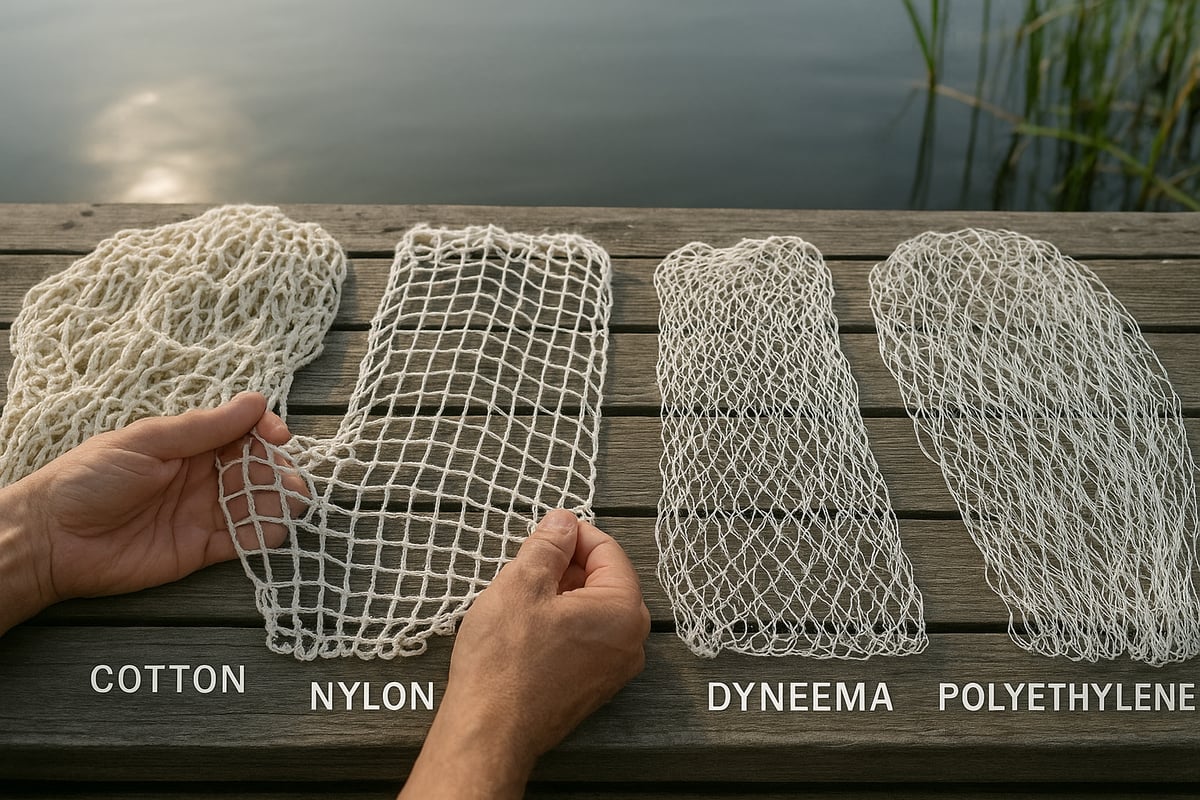
Target Species and Fishing Method
Matching your fishing net white material to your target species is essential. Fish size, strength, and behavior all influence which net works best. For example, robust species require stronger, less stretchy materials, while smaller fish may demand finer mesh.
Mesh size is equally important. Gillnetting, trawling, and cast netting each benefit from different materials and mesh configurations. A larger mesh may suit larger fish, while smaller mesh is ideal for baitfish or shrimp.
When selecting a fishing net white, consider whether you need knotless or knotted mesh. Knotless nets are gentler on fish and reduce scale loss, making them ideal for catch-and-release or delicate species. Always match your net’s design to your fishing method for optimal results.
Durability, Strength, and Longevity
The durability of your fishing net white material determines how it withstands abrasion, UV rays, and harsh saltwater. Nylon and Dyneema offer high resistance to wear, while natural fibers like cotton degrade faster in wet environments.
Mechanical strength is impacted by the type of material, yarn diameter, and mesh size. For a deeper understanding, consult this Strength of fishing nets: material, yarn diameter, and mesh size resource, which breaks down how these factors affect net longevity and reliability.
Maintenance also plays a role. Synthetic nets require less frequent repairs, while natural fiber nets demand more care. Choose a fishing net white material that fits your fishing frequency and the conditions you face.
Visibility and Stealth Underwater
Visibility is a double-edged sword in fishing net white selection. White nets are highly visible in clear water, which can alert cautious fish. In murky or low-light conditions, however, a white net might blend in or even attract certain species.
If you target wary or easily spooked fish, consider how your fishing net white’s color and opacity appear underwater. Some anglers choose high-visibility nets for shallow, fast-moving water where fast deployment matters, while others opt for low-visibility options for stealth.
Testing your net in the water before committing can reveal how fish react. The right balance of visibility and stealth can make a significant difference in catch rates.
Weight, Flexibility, and Handling
How your fishing net white feels in use affects your entire fishing experience. Heavier materials like thick nylon offer strength but can be tiring to deploy and retrieve, especially solo. Lighter options such as monofilament or certain polyethylenes are easier to handle and store.
Flexibility impacts how well the net conforms to the water and entangles fish. Rigid nets may tangle less but can be awkward in tight spaces. For crew operations, a heavier, more robust net can be managed easily, while solo anglers often prefer lighter, more flexible materials.
Always test the weight and flexibility of your fishing net white before purchasing, if possible, to ensure comfortable handling.
Cost, Availability, and Sourcing
Price and availability of fishing net white materials vary globally. Here is a quick comparison:
| Material | Average Cost (2025) | Availability |
|---|---|---|
| Cotton | $$ | Limited |
| Nylon | $$$ | Widely found |
| Polyethylene | $$ | Common |
| Dyneema | $$$$ | Specialty |
In 2025, synthetic nets like nylon and polyethylene are most accessible, while high-tech materials such as Dyneema command premium prices. Local regulations and supply chains may affect what is available in your area.
When sourcing fishing net white products, consider buying from reputable suppliers who offer detailed product information and after-sales support. This ensures you receive genuine, high-quality materials that meet your needs.
Environmental Impact and Disposal
Sustainability is a growing concern for fishing net white users. End-of-life options include recycling, composting (for natural fibers), or repurposing nets for other uses. Some regions now require biodegradable nets to reduce marine pollution.
Improper disposal can harm marine ecosystems and result in legal penalties. Always check local regulations to ensure compliance. Many modern fishing net white materials are designed with reduced ecological impact in mind, giving you peace of mind while fishing responsibly.
Step-by-Step Guide: How to Choose the Best White Fishing Net Material
Choosing the right fishing net white material can transform your results on the water. To ensure your investment pays off, follow this structured, expert-backed process. Each step below helps you make a confident, informed decision—no guesswork required.
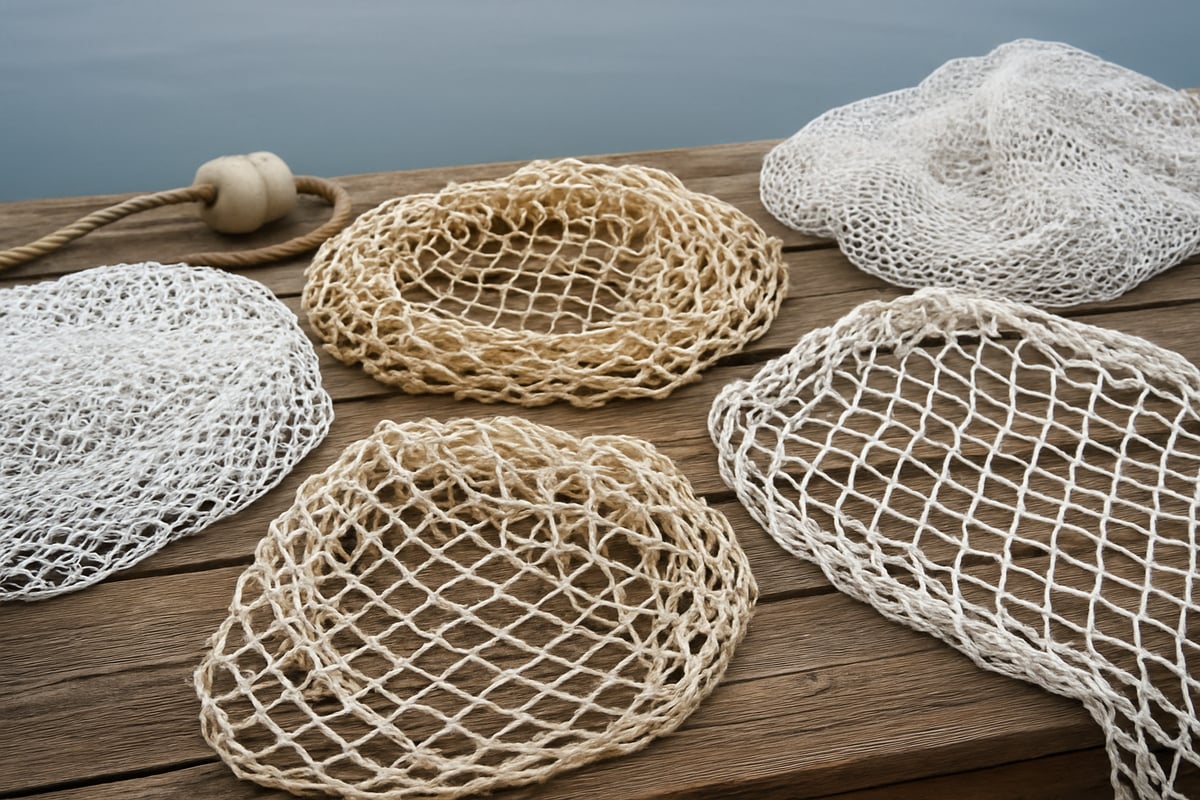
Step 1: Define Your Fishing Goals and Conditions
Start by clarifying your main objectives for using a fishing net white. Are you targeting small freshwater species or large saltwater game fish? Will you fish commercially, recreationally, or both?
List your fishing environments (river, lake, open sea) and note how often you plan to fish. This context shapes your requirements. For example, a recreational angler in clear lakes may want a lightweight fishing net white for easy handling, while a commercial operator in saltwater will prioritize durability and resistance to corrosion.
By considering these details, you set the foundation for choosing the most effective fishing net white for your unique needs.
Step 2: Research Local Regulations and Environmental Guidelines
Before purchasing any fishing net white, check local and national regulations. Some regions restrict certain net materials, mesh sizes, or colors to protect fish populations and habitats.
Look for official resources or reach out to local fisheries departments. Environmental guidelines may require biodegradable nets or prohibit specific synthetic fibers. Staying informed saves you from costly mistakes and fines.
For further clarity on compliance and best practices, consult Frequently asked fishing net questions to ensure your fishing net white meets all legal and ecological standards.
Step 3: Compare Material Performance Based on Your Needs
Evaluate how each fishing net white material performs in your chosen environment. Compare options using criteria such as:
| Material | Strength | Flexibility | Visibility | Maintenance | Longevity |
|---|---|---|---|---|---|
| Nylon | High | Good | Medium | Easy | Long |
| Polyester | Medium | Moderate | Low | Moderate | Medium |
| Cotton | Low | High | High | Difficult | Short |
Use a checklist to prioritize what matters most: Do you need UV resistance? Is stealth or visibility more important? Should the fishing net white be lightweight for solo trips, or robust for heavy loads?
By systematically comparing these factors, you narrow down your choices to the best-fit materials for your fishing net white.
Step 4: Evaluate Product Quality and Manufacturer Reputation
Once you have a shortlist, assess the quality of each fishing net white product and the reputation of its manufacturer. Look for certifications that guarantee material standards and safety.
Check for warranties, transparent sourcing, and user reviews. Reputable suppliers often offer customization, after-sales support, and clear product specifications. This diligence helps you avoid subpar fishing net white products and ensures reliable performance.
Step 5: Test or Consult Before Purchase
If possible, arrange to test fishing net white samples in real-world conditions. Many suppliers provide small swatches, or you can borrow nets from experienced fishers.
Consult with local experts or fishing communities for insights on how different materials perform. Firsthand feedback can reveal practical pros and cons of each fishing net white that specifications alone might miss.
Step 6: Make Your Selection and Plan for Maintenance
After evaluating all factors, make your final fishing net white selection. Review care instructions to maximize lifespan.
Plan a regular maintenance schedule: rinse after use, inspect for damage, and store properly. Investing time in upkeep ensures your fishing net white remains effective, safe, and ready for your next outing.
Maintenance and Care for White Fishing Nets
Proper maintenance is essential for maximizing the lifespan and performance of your fishing net white. Whether you fish recreationally or commercially, caring for your net ensures it remains reliable, safe, and effective throughout the season.
Cleaning and Storage Best Practices
Cleaning your fishing net white after each use prevents salt, algae, and debris from degrading the material. Begin by rinsing the net thoroughly with fresh water, especially after saltwater exposure. Use a soft brush to remove stubborn dirt, and check for trapped organic matter in the mesh.
Allow the net to air dry completely before storage. Hang it in a shaded, well-ventilated area to avoid mildew or rot. Avoid direct sunlight during drying, as prolonged UV exposure can weaken the fishing net white fibers. Store your net loosely coiled in a dry, cool space to maintain its shape and flexibility.
Repairing and Extending Net Life
Regular inspection and timely repairs are crucial for extending the service life of your fishing net white. Small holes can quickly become larger if left unattended, so patch them as soon as they appear. Use a repair kit with netting needles, twine, and scissors to reinforce weak spots.
To mend minor tears, thread a length of durable twine through the damaged area, matching the original mesh pattern. For larger repairs, replace whole mesh panels if necessary. Keeping a portable repair kit on hand during fishing trips ensures your fishing net white remains functional and safe.
Handling UV and Environmental Exposure
Exposure to sunlight and harsh weather can degrade the quality of your fishing net white. To minimize UV damage, dry your net in the shade and limit the time it spends in direct sunlight. Applying a UV-protective spray or net coating can also help preserve material strength.
Environmental factors such as salt, chemicals, and pollutants can accelerate wear. Always rinse your fishing net white after use, especially in polluted or brackish waters. Regular cleaning and protective measures maintain the net's integrity and performance.
Routine Inspection and Replacement Cycles
Establishing a routine for inspecting your fishing net white helps you detect damage early and maintain safety. Examine the mesh, knots, and seams for signs of abrasion, fraying, or discoloration. Run your fingers along the net to feel for weak spots or thinning fibers.
Replace your net when repairs become frequent or if you notice significant loss in performance. For visual guides on identifying wear and comparing new products, check out Fishing net review videos to see how different white nets hold up over time. A proactive approach ensures your fishing net white always delivers optimal results.
Comparing Top Brands and Suppliers of White Fishing Nets in 2025
Choosing the right fishing net white brand is crucial for both performance and reliability. In 2025, buyers have more options than ever, with leading manufacturers and innovative newcomers continuously refining their offerings. Understanding the differences between top brands, their materials, and their service approach will help you make an informed investment.
Industry Leaders and Their Material Offerings
In 2025, several brands dominate the fishing net white market, each offering distinct advantages. Established names like Euronete, Fibramar, and Nitto Seimo are recognized for their durable nylon and polyethylene nets, while newer entrants focus on high-tech fibers and eco-friendly options. Many suppliers now provide hybrid meshes and custom solutions tailored for diverse fisheries.
A growing trend is the availability of commercial and custom fishing nets, giving buyers access to specialized materials and mesh configurations. These options range from traditional knotted designs to advanced knotless, low-drag panels, meeting the evolving needs of commercial and recreational fishers alike.
| Brand | Key Material(s) | Notable Features |
|---|---|---|
| Euronete | Nylon, Polyethylene | UV resistance, custom mesh |
| Fibramar | Polyester, Hybrid | Lightweight, easy handling |
| Nitto Seimo | Dyneema, Monofilament | High strength, long lifespan |
When evaluating fishing net white options, consider each brand’s focus on innovation and compliance with modern sustainability standards.
What Sets the Best Suppliers Apart
The best fishing net white suppliers in 2025 stand out through exceptional customer service and post-purchase support. They offer tailored advice, customization options, and reliable after-sales assistance, ensuring users maximize net lifespan and performance.
Quick lead times, transparent shipping policies, and global export capabilities are also vital. Leading brands provide clear documentation and certifications, which help buyers verify product authenticity and regulatory compliance. Responsive support teams can address questions about maintenance or replacement, making a significant difference in long-term satisfaction.
Price vs. Performance: Making the Right Investment
Balancing cost and durability is essential when selecting a fishing net white. High-performance nets may require a greater upfront investment, but they often deliver superior longevity and lower replacement costs over time. Many users report that spending more initially on advanced materials like Dyneema or certified eco-friendly options pays off in reduced maintenance and fewer lost catches.
Consider testimonials from commercial fishers who have upgraded to hybrid or monofilament nets. They frequently note an increase in catch rates and a decrease in downtime for repairs, proving that the right net material is a smart investment for any operation.
Where to Buy: Online, Local, and Direct-from-Manufacturer
Fishing net white products are available through various channels in 2025. Buying online offers convenience and access to a wide selection, while local suppliers may provide hands-on support and faster delivery. Direct-from-manufacturer purchases often yield the best prices and customization opportunities.
To ensure authenticity, always verify supplier credentials and request product samples if possible. Comparing options across channels can help you secure a high-quality net suited to your needs.
Frequently Asked Questions About White Fishing Net Materials
Curious about the essentials of fishing net white materials? Here, we answer the most common questions to help you make informed choices for your fishing needs in 2025.
What is the difference between nylon and polyester fishing nets?
Nylon and polyester are the most popular fishing net white materials today. Nylon nets are renowned for their flexibility and high strength, making them easy to handle and resistant to breakage. Polyester nets, by contrast, offer superior UV resistance and less water absorption, which helps extend their lifespan. Both materials are lightweight, but nylon typically provides more stretch, while polyester maintains its shape better over time. Choosing between them depends on your fishing environment and preference for durability versus flexibility.
Are biodegradable fishing nets effective and available in 2025?
Biodegradable fishing nets have become more effective and widely available in 2025. Modern biodegradable materials break down naturally in aquatic environments, reducing long-term pollution. While they may not match the absolute lifespan of synthetic fishing net white options, they provide a responsible choice for eco-conscious anglers. Many commercial fisheries now use certified biodegradable nets, especially in areas with strict environmental regulations.
How do I know if my net material is legal for my location?
Laws regulating fishing net white materials can vary by region and water type. Always check local fisheries regulations or consult with your regional fisheries office before purchasing or using any net. Many areas now regulate mesh size, material type, and even color to protect specific species and habitats. Reliable online resources or government websites provide up-to-date compliance information to ensure your fishing practices are legal.
Can I dye or modify a white fishing net for better performance?
Yes, it is possible to dye or modify a fishing net white to suit different fishing conditions. Many anglers dye their nets to reduce visibility in certain waters or to target specific fish species. However, only use dyes and treatments approved for aquatic environments to avoid harming marine life. Modifying mesh size or shape can also influence catch efficiency, but always ensure your changes comply with local regulations.
What’s the best way to dispose of an old white fishing net?
Proper disposal of an old fishing net white is crucial for the environment. Options include recycling through specialized programs, donating to net repurposing projects, or using biodegradable nets that naturally break down. Never discard nets in waterways, as they can threaten marine life. Look for local recycling centers or manufacturer take-back schemes for responsible disposal.
How does mesh size affect material choice?
Mesh size directly affects which fishing net white material is most suitable for your needs. Larger mesh sizes require materials with higher tensile strength to maintain net shape and performance. For detailed comparisons, refer to studies on hydrodynamic characteristics of netting panels that analyze how material, knot style, and mesh design influence net handling and efficiency. Always select a mesh and material combination that matches your target species and fishing method.
Are there white nets suitable for both freshwater and saltwater fishing?
Yes, several fishing net white materials are designed for versatility in both freshwater and saltwater environments. Nylon and polyester are especially popular due to their resistance to water absorption and corrosion. When choosing a net, consider coatings or treatments that add extra protection against salt, UV rays, and abrasion. This ensures long-lasting performance wherever you fish.
Now that you know what sets the best white fishing net materials apart in 2025, you’re ready to make an informed choice for your next fishing adventure Whether you’re fishing commercially or just want to maximize your weekend catch, using the right net can mean the difference between success and missed opportunities Action Outdoors Limited offers a wide selection of ready to use nets crafted for New Zealand conditions and Pacific markets, so you can trust in their proven durability and performance Take the next step and set yourself up for a great season—explore your options and Buy Now

